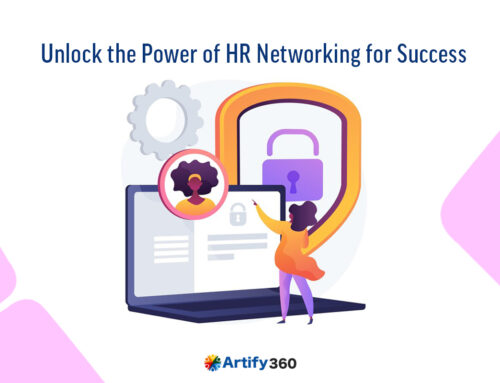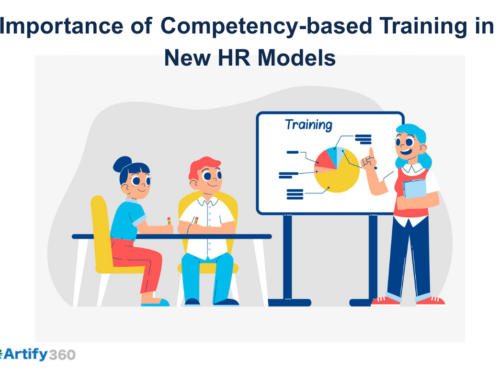If employee onboarding is an exciting process in your company, employee offboarding is the exact opposite of that. An employee leaves your organization willfully or due to termination. Whatever the reason could be, you should initiate the offboarding process effectively.
Efficient offboarding helps your organization to build a rapport with the leaving employee, which helps your business build credibility and helps you in building a talent pool. But without a proper strategy and an offboarding management system, you can’t achieve this. Also, the purpose of an effective offboarding process includes taking appropriate measures to reduce employee turnover in your organization.
In this article, let’s discuss the essential steps needed for effective offboarding in your company. So without further ado, let’s jump into
1.Communication
Proper communication is necessary for any relationship, including your company and the employees leaving. You should make sure you properly communicate with your employee directly when they express their resignation. It helps you to know the exact reason behind their leaving.
Sometimes the reason could be an internal conflict or any other reason. Knowing this with communication will help you with your decisions. Proper communication is also a key to the next crucial steps of an effective employee onboarding process. You can’t expect their cooperation in the offboarding process without communicating with your employees.
2.Documentation
There is crucial documentation that needs to be done during employee offboarding. Without such documentation, errors in this documentation could lead to severe legal complications for your business. So you should get all the documents done to be legally safe.
Some of the crucial documentation in the offboarding process are
- Termination/Resignation Letter
- NDA
- Experience letter
Your organization should have an effective system that helps you quickly generate the necessary documents for leaving employees. So you can finish the documentation without any friction and ensure a smooth going for your employees.
To create a seamless employee onboarding experience, your business will need an offboarding management platform. Such an efficient platform will help you streamline the crucial tasks in managing a leaving employee.
3.Prepare for Knowledge Transfer
Preparing for knowledge transfer is an essential step in your company if an employee announces their resignation. You should be able to replace the talent immediately and take the necessary steps to prevent any complications in your ongoing projects.
Suppose an employee leaves midway through a project. In that case, it could disrupt the project, leading to dissatisfaction and bad reviews from your clients. To avoid that, you should begin the knowledge transfer process immediately after confirming an employee’s termination or resignation.
Proper knowledge transfer includes transferring the project smoothly to the replacement or dividing the tasks among other employees. But make sure you are not overwhelming your existing employees with the added burden.
4.Recover Company Assets
You should recover the company assets used by the leaving employees. It could include the authorization to your company profiles, software, hardware and other company belongings. Proper asset recovery will help your company avoid many consequences, such as privacy risks.
To recover the assets from a leaving employee, your business should implement an asset management system that stores and organizes all the necessary information about your company assets.
So you can quickly check the asset condition to ensure they are working well. Proper asset management is crucial for your business to save valuable resources.
5.Conduct an Exit Interview
Exit interviews are a crucial part of an effective offboarding strategy. Exit interviews help your business know the precise reason behind an employee’s exit. These details will help your business to make critical business decisions.
The exit interview also helps your business look for changes that help you retain employees. You should ensure that the employee can come back when needed if the leaving employee is a valuable asset. Doing this allows you to win your employee back in the future. You should not let an employee exit as the curtains for an employee in your company.
While conducting exit interviews, ensure the questions are specific and that you get enough data. You can conduct direct interviews or use a questionnaire with specific questions. Choose a method which is practical and convenient for your employees.
6.Update Employee Data and Process Paycheck
You should update the data of the employees leaving in your database. It helps you during the audits and tax filing of your business. Having an updated database helps your company in future.
You should settle all the payments of your leaving employee. It includes the salary, bonuses, indemnity, GOSI, encashments and all payments you owe to them. Any mistakes in the final settlement will lead to lawsuits against your business and damage the reputation of your business.
So you should ensure your company has payroll software that helps your business calculate all the payments, including the final settlement.
Final Thoughts
If you follow all these steps, your company will have a successful employee offboarding process. It helps your business to build a relationship with your leaving employees and will create a talent pool for your future. You will have a chance to win back your leaving employees even.
Artify 360 is the HRMS software built for growing companies in the Middle East. Artify 360 HRMS software allows your business to simplify the offboarding process with an accurate offboarding checklist that guides you through the entire process. So you won’t miss any critical steps that must be followed when an employee leaves your company.
The asset management and payroll management systems in Artify 360 HRMS software helps your business further enhance the offboarding process precisely.
Request a Free Demo to implement Artify 360 in your business to simplify all your HR operations.






